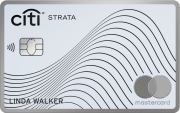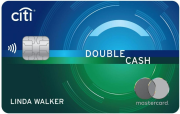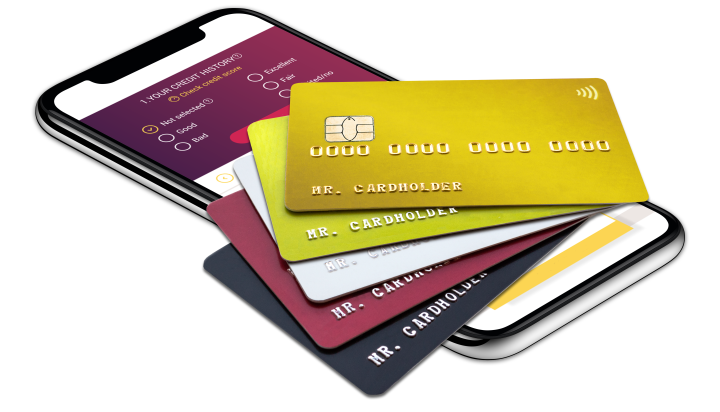The content on this page is accurate as of the posting date; however, some of the offers mentioned may have expired.

Understanding your risk and that of a lender can keep you out of trouble.
For every risk in life there is the chance of a reward. The way to lower that risk and increase the reward with credit cards is to understand just what you're getting into. For people with bad credit, not understanding how credit cards work may be partly to blame for some of their problems. Fortunately, with some work and an increased awareness of how to better manage plastic, choosing the right option can help you get back on your feet.
The Past
Traditionally, loans have always been given to people in exchange for some sort of collateral. This practice has existed throughout history, dating to the earliest money exchangers, and continuing to a large extent today. Mortgages for homes and autos are prime examples of modern day loans backed or secured by collateral.
Enter the Credit Card Era
The advent of the credit card in the 1950s changed all that. Some finance companies started issuing credit without requiring anything up front for collateral - instead extending what is referred to as "unsecured credit." As the credit extended was not secured by hard assets, the card companies issuing the credit had no recourse to seize assets if you failed to make payments. In a real sense, they were sticking their own necks out on the line. In return for the obvious risk they were taking on, they charged customers interest to make money and cover their risk.
Since the early days of the card industry, the issuers have perfected making money on their customers; nevertheless, they continue to incur risk for each dollar loaned to customers in the form of credit lines. "They have a financial risk," said Ravi Shahani, a credit counselor with American Consumer Credit Counseling. To deal with that risk, the card issuers assess each person they extend credit to in an attempt to reduce their exposure. "They have to take everything about you into consideration," explains Shahani. They do this through different means, such as credit profiling (e.g. FICO™ scores - a subject in and off itself), verifying information, monitoring your credit reports, etc.
Overall, that's why individuals are charged different rates of interest and fees on their credit cards. Bottom line, any lender will extend more credit to a person with good credit than bad credit. It's how they manage the risky nature of the business.
While lender risk is easy enough to understand for the average person, the fact there is considerable risk to the consumer seems less self-evident. Unfortunately, a lot of consumers don't know or seem to consider their own risk, which in many instances can lead to their financial demise. Given a big credit limit, it's easy to go on a spending spree. But as much fun as that shopping binge can be, you risk over-extending yourself. If you're financially unable to make those minimum monthly payments on your credit card, you'll then hurt your credit score. That can impair your ability to borrow down the line, limiting your purchasing power when it comes to a new home or a new car.
Credit card companies protect themselves against this type of increased risk by passing the costs on to the person with the bad credit. "They'll give you a lower credit limit and charge a higher interest rate," Shahani says. A large, unpayable balance generally means you're paying a lot of money to the credit card company - money you could be using for a variety of other things.
Not surprisingly, people who have bad credit have generally underestimated their risk exposure, and as a result, end up wondering how they can improve their credit score and get back on their feet. What may be surprising is the answer to that question - the proverbial "hair of the dog." The very instrument that got them into trouble in the first place - credit cards.
That's right. You can rebuild your credit history and restore the faith of those risk-adverse banks simply by using your credit cards wisely. Here are a few tips for getting yourself back in shape:
Look for the Best, Prepare for the Worst
You'll be surprised at how many people are still willing to give you a credit card, but don't consider yourself too fortunate. Remember the risk we mentioned earlier? Banks are going to cover themselves by offering you a card at a high rate with a lower credit line. It will also be loaded with fees. The preferable option is to take the best deal you can (read the fine print on the agreement carefully) and then use the card sparingly. Just put a small amount on it, and then pay off the balance in full every month. This simple routine will show creditors you're not about to fly off the handle again and go on a shopping spree.
Use a Secured Credit Card
This option requires you to actually give the bank some money upfront before they offer you a credit card. For example, if you deposit $1,000 with a bank, they may give you a card with a $1,000 credit limit. What's the point? One, you're doing this to reestablish your credit and prove yourself to be reliable. Two, you'll have the convenience of a credit card, which means access to money if you don't have cash or the merchant won't take a check.
Don't Get Too Many Cards or Too Much Credit
You've already had trouble spreading yourself thin - be careful you don't fall into that trap again. "Try and get one card and then make at least the minimum payments," advises Shahani. Don't get too many cards - the temptation to spend might be too great. And because all those cards show up on your credit report, all you'll do is make a creditor nervous.
Smaller Cards Turn Big Results
Even using a card issued by a gas company or a department store will reassure some of the companies who issue the major cards.
Remember, you've got to make yourself a less risky customer in order to get those credit card companies to take a chance on you. "It can take a minimum of six months to start improving your credit score," Shahani notes. In other words, it will take time and discipline, but if you follow many of these tips, you'll find yourself back on your feet and spending wisely.
Two Sided Coin
There is risk on both sides of the credit card equation. Here are a few things you should look for in a credit card deal, and here's what the credit card company is looking at when they consider extending you credit.
You should look at:
- Fees (application fees, processing fees, annual fees, etc.)
- Annual Percentage Rate (APR)
- Credit limit
- Special restrictions
- Grace period
A credit card company will look at:
- Payments and your history of making them on time
- Your debt load (how much debt you have)
- Length of time at your current job
- Length of time in your current residence





